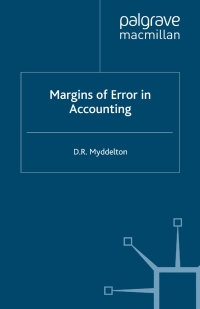Kitchen Supply, Inc. (KSI), manufactures three types of flatware: institutional, standard, and silver. It applies all indirect costs according to a predetermined rate based on direct labor-hours. A consultant recently suggested that the company switch to an activity-based costing system and prepared the following cost estimates for year 2 for the recommended cost drivers. Recommended Estimated Estimated cost Activity Cost Driver Cost Driver Activity Processing orders Number of orders Setting up production 41,125 175 orders Number of production runs 190,000 100 runs Handling materials Pounds of materials used Machine depreciation and 336, 080 120, 000 pounds maintenance Machine-hours 242,000 11,000 hours Performing quality control Number of inspections Packing 45,850 35 inspections Number of units 147,000 490,000 units Total estimated cost $1,001,975 In addition, management estimated 7,600 direct labor-hours for year 2. Assume that the following cost driver volumes occurred in January, year 2. Silver 9,000 $15,000 550 Number of units produced Direct materials costs Direct labor hours Number of orders Number of production runs Pounds of material Machine-hours Number of inspections Units shipped Institutional 63,000 $37,000 490 13 4 16,000 570 2 63,000 Standard 26,000 326,000 420 7 4 7,000 130 4 26,000 6 3,300 70 3 9,000 Actual labor costs were $15 per hour. Required: a. (1) Compute a predetermined overhead rate for year 2 for each cost driver using the estimated costs and estimated cost driver units prepared by the consultant (2) Compute a predetermined rate for year 2 using direct labor-hours as the allocation base. b. Compute the production costs for each product for January using direct labor-hours as the allocation base and the predetermined rate computed in requirement (2) c. Compute the production costs for each product for January using the cost drivers recommended by the consultant and the predetermined rates computed in requirement a (Note: Do not assume that total overhead applied to products in January will be the same for activity-based costing as it was for the labor-hour-based allocation) Complete this question by entering your answers in the tabs below. Req A1 Reg A2 Reqs Reqc Compute a predetermined overhead rate for year 2 for each cost driver using the estimated costs and estimated cost driver units prepared by the consultant. (Round your answers to 2 decimal places.) Activity Rate Processing orders per order Setting up production per run Handling materials per pound Using machines per machine hour Performing quality control per inspection Packing per unit Req A2 > Required: a. (1) Compute a predetermined overhead rate for year 2 for each cost driver using the estimated costs and estimated ca prepared by the consultant (2) Compute a predetermined rate for year 2 using direct labor-hours as the allocation base. b. Compute the production costs for each product for January using direct labor-hours as the allocation base and the p rate computed in requirement a(2) c. Compute the production costs for each product for January using the cost drivers recommended by the consultant a predetermined rates computed in requirement a. (Note: Do not assume that total overhead applied to products in Janua same for activity-based costing as it was for the labor-hour-based allocation.) Complete this question by entering your answers in the tabs below. Req A1 Reg A2 Red B Reqc Compute a predetermined rate for year 2 using direct labor-hours as the allocation base. (Round your answer to 2 decimal places.) Predetermined rate per direct labor-hour a. Required: (1) Compute a predetermined overhead rate for year 2 for each cost driver using the estimated costs and estimated cost driver units prepared by the consultant. (2) Compute a predetermined rate for year 2 using direct labor-hours as the allocation base. b. Compute the production costs for each product for January using direct labor-hours as the allocation base and the predetermined rate computed in requirement a(2) c. Compute the production costs for each product for January using the cost drivers recommended by the consultant and the predetermined rates computed in requirement a (Note: Do not assume that total overhead applied to products in January will be the same for activity-based costing as it was for the labor-hour-based allocation.) Complete this question by entering your answers in the tabs below. Req A1 Req A2 Req Reqc Compute the production costs for each product for January using direct labor-hours as the allocation base and the predetermined rate computed in requirement a(2). (Do not round intermediate calculations.) Account Institutional Standard Silver Total Direct materials 37,000 $ 26,000 $ 15.000 $ 78,000 Direct labor Indirect costs Total cost 37,000 $ 26,000 $ 15,000 $ 78,000 0 0 $ Complete this question by entering your answers in the tabs below. Reg A1 Reg A2 ReqB Reqc Compute the production costs for each product for January using the cost drivers recommended by the consultant and the predetermined rates computed in requirement a. (Note: Do not assume that total overhead applied to products in January will be the same for activity-based costing as it was for the labor-hour-based allocation.) (Do not round intermediate calculations.) Show less Institutional Standard 37.000 $ 26,000 Silver 15,000 $ $ Total 78,000 0 0 Account Direct materials Direct labor Indirect costs Processing orders Setting up production Handling materials Using machines Performing quality control Packing Total cost 0 0 lo 0 0 $ 37,000 $ 26,000 $ 15,000 $ 78.000











